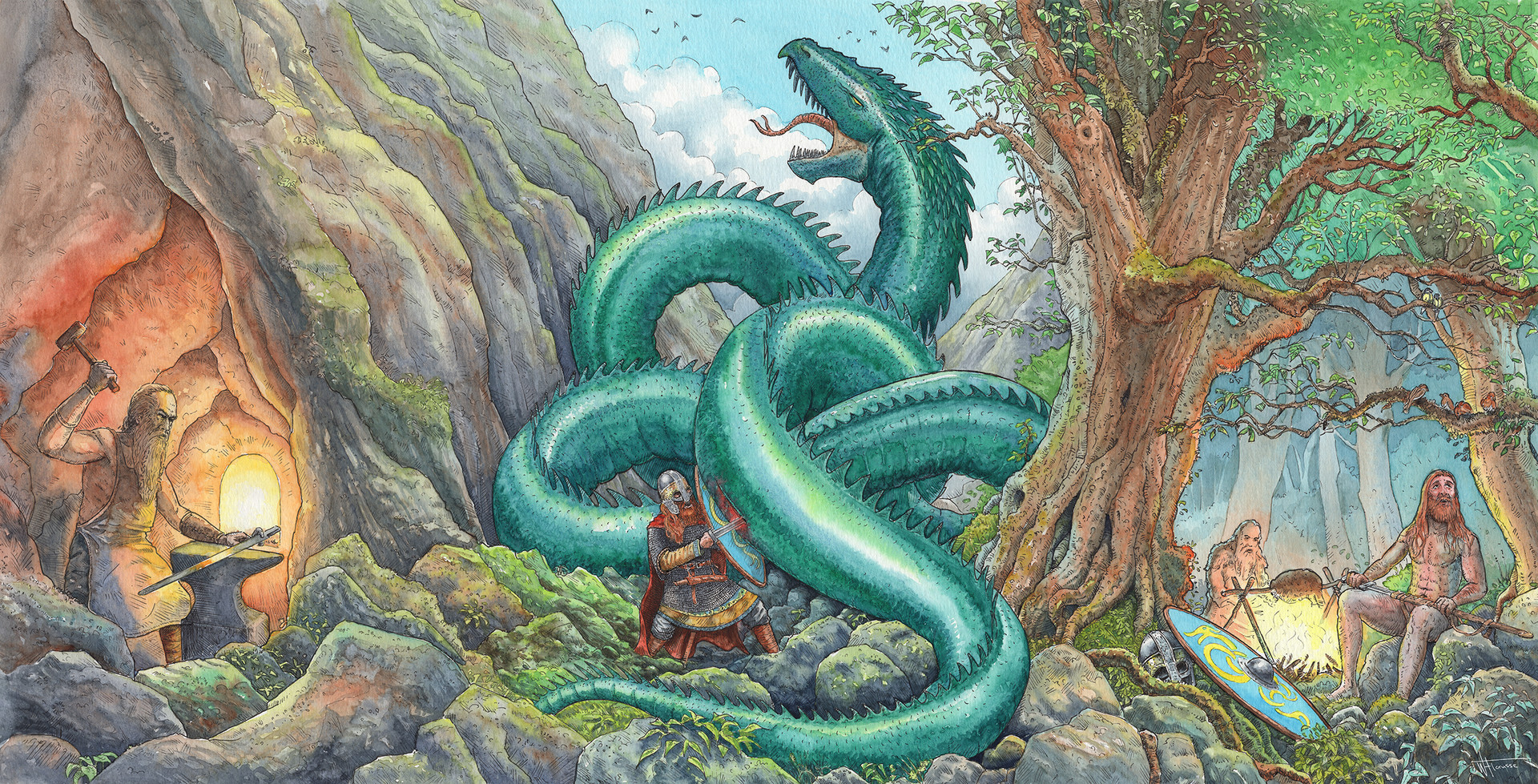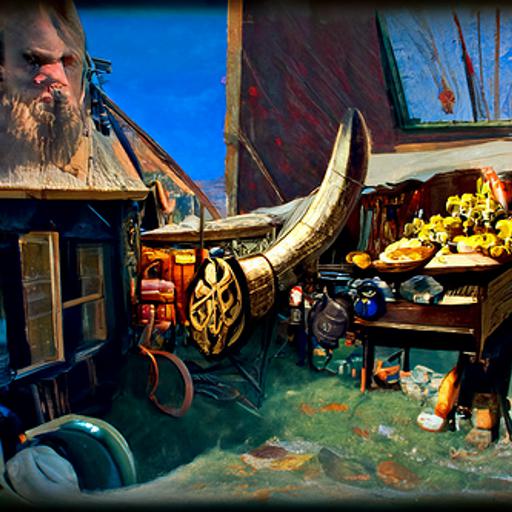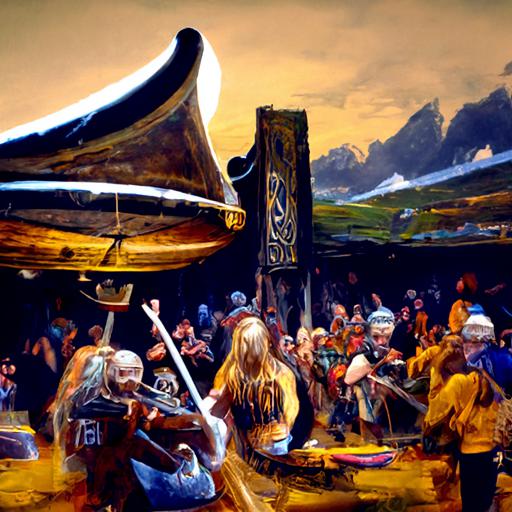The Vikings had a rich mythology, filled with stories of creation, heroes, and monsters. These stories were passed down through oral tradition and were eventually written down in the form of sagas and poems. In this blog post, we will explore some of the key elements of Viking mythology, including the creation myth, the heroes and gods, and the monsters and creatures.
Creation Myths
In Viking mythology, the creation of the world is attributed to a primeval giant named Ymir. According to the myth, Ymir was created from the primal void known as Ginnungagap. He was a hermaphrodite and gave birth to the first creatures, including the giant cow Audhumbla. Audhumbla fed Ymir with her milk, and from his sweat, more giants were born.
Eventually, Odin, Vili, and Ve, the three most powerful gods in Viking mythology, killed Ymir and used his body to create the world. His blood became the oceans, his bones became the mountains, and his hair became the trees.

Heroes and Gods
Viking mythology is filled with heroes and gods, each with their unique strengths and abilities. The most powerful gods were Odin, Thor, and Freyja. Odin was the god of wisdom, war, and death. He was known for his wisdom and was willing to do whatever it took to gain knowledge. Thor was the god of thunder and war. He was the protector of mankind and was often called upon to defend them against the giants. Freyja was the goddess of love, fertility, and war. She was often depicted as a powerful and independent woman.
Other notable heroes in Viking mythology include Sigurd, who killed the dragon Fafnir and took his treasure, and Beowulf, who fought against the monster Grendel and his mother.

Monsters and Creatures
Viking mythology is also filled with monsters and creatures, many of which are still popular today. The most famous of these is the dragon, which was said to guard treasure hoards and was often slain by heroes like Sigurd. Other creatures included giants, trolls, elves, and dwarves.
One of the most famous monsters in Viking mythology is Fenrir, a giant wolf who was prophesied to kill Odin during Ragnarok, the end of the world. Another notable creature is Jormungandr, a sea serpent who was so large that he encircled the entire world.
Conclusion
Viking mythology is a rich and complex world filled with creation myths, heroes, and monsters. The stories and characters continue to captivate us to this day, and have even inspired modern literature and films. By exploring the myths of Viking mythology, we gain a deeper appreciation for this fascinating culture and their beliefs.
Works Cited:
- Crossley-Holland, Kevin. The Norse Myths. Pantheon, 1980.
- Davidson, H.R. Ellis. Gods and Myths of Northern Europe. Penguin Books, 1964.
- Orchard, Andy. Dictionary of Norse Myth and Legend. Cassell, 1997.





Leave a comment
This site is protected by hCaptcha and the hCaptcha Privacy Policy and Terms of Service apply.